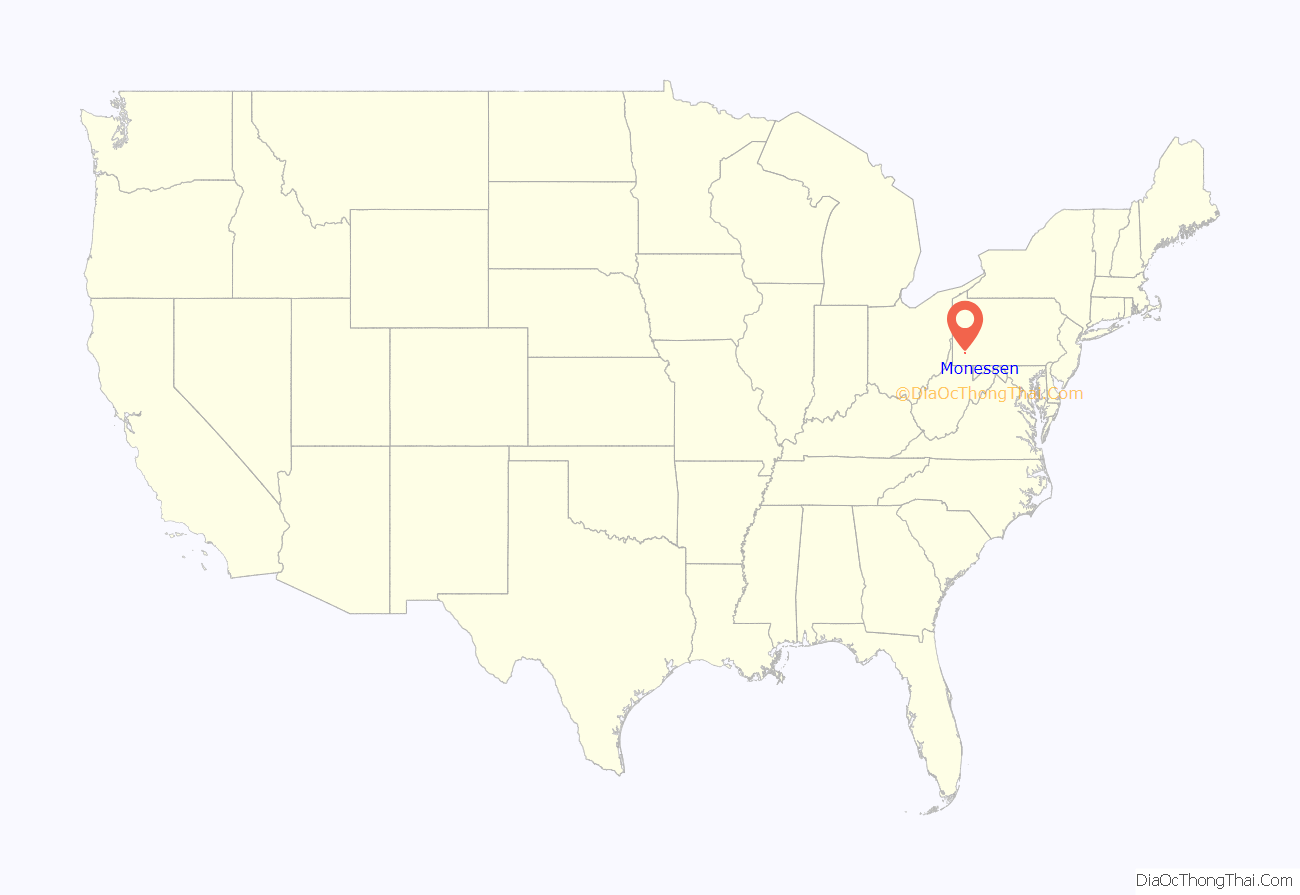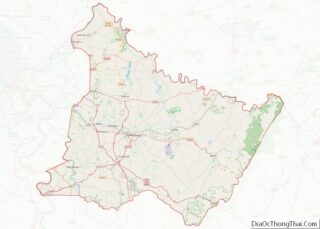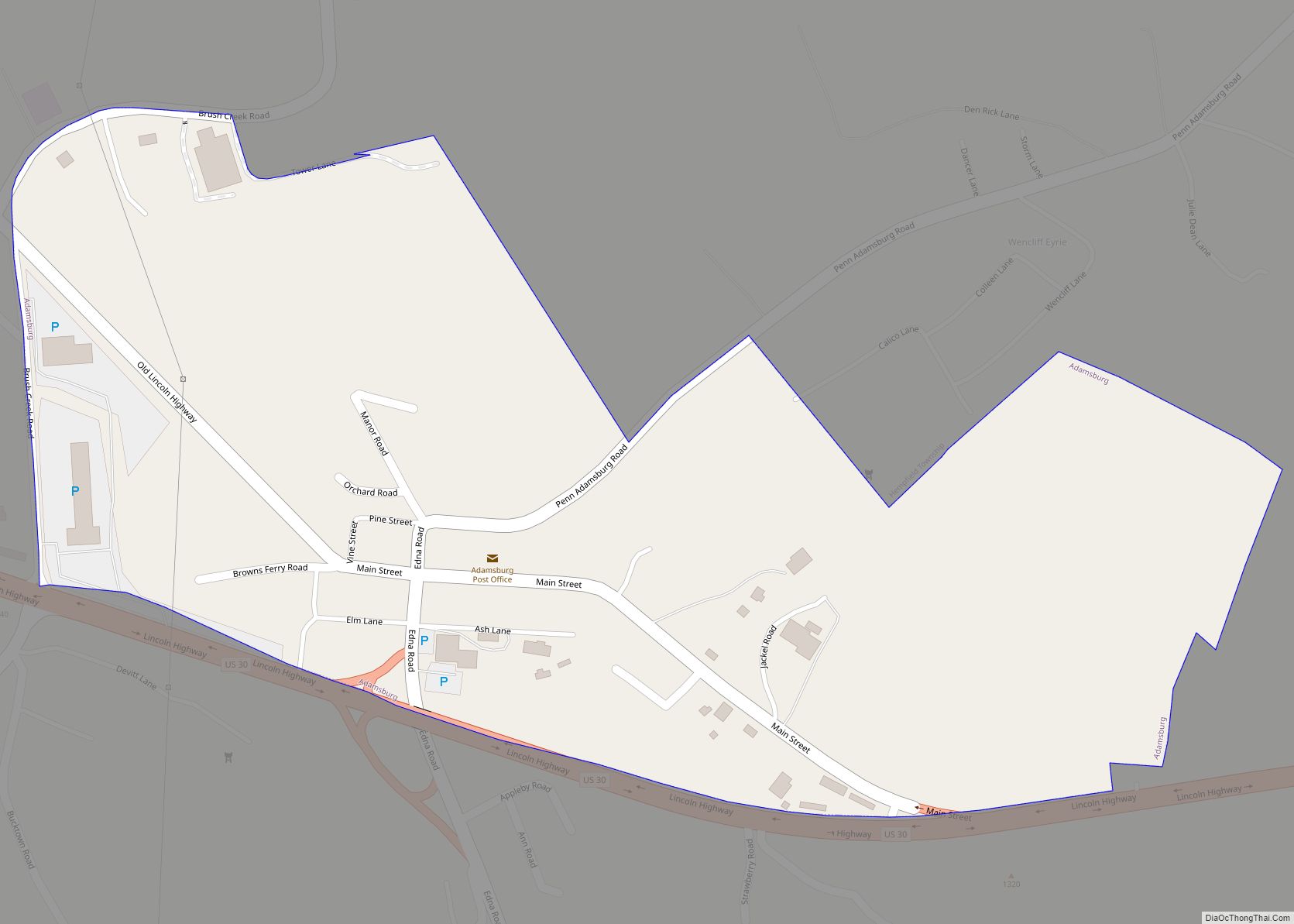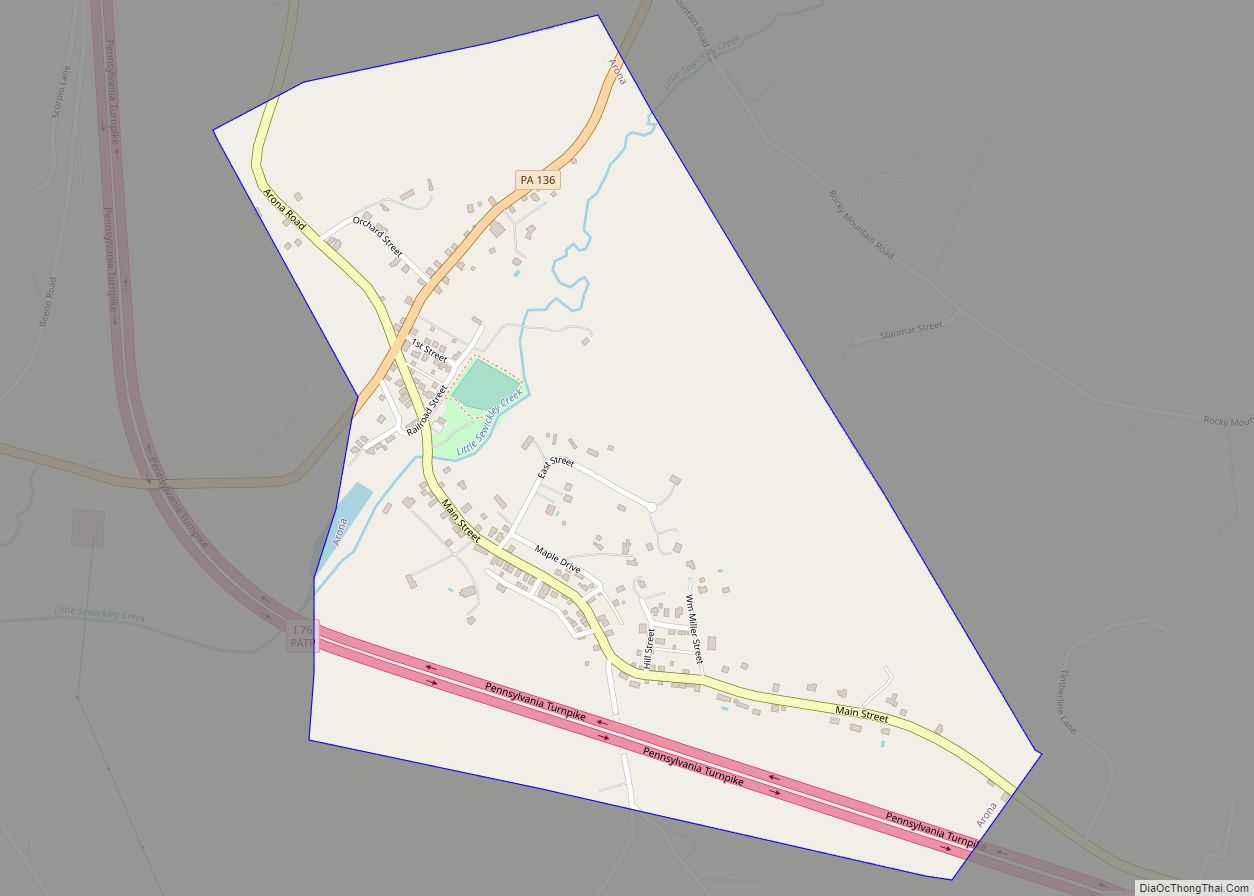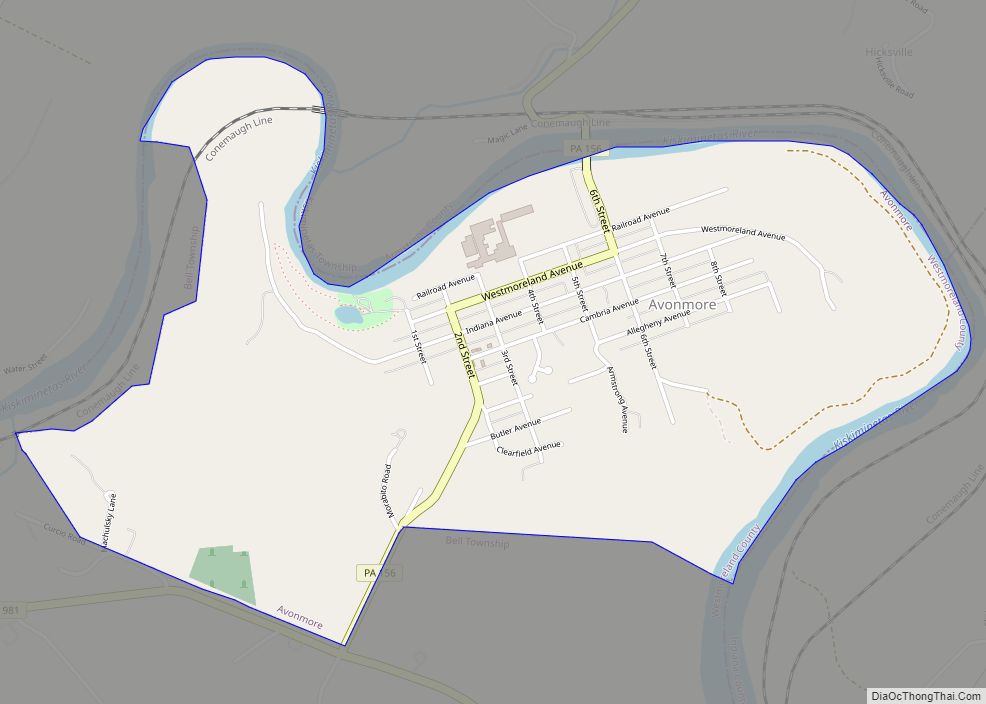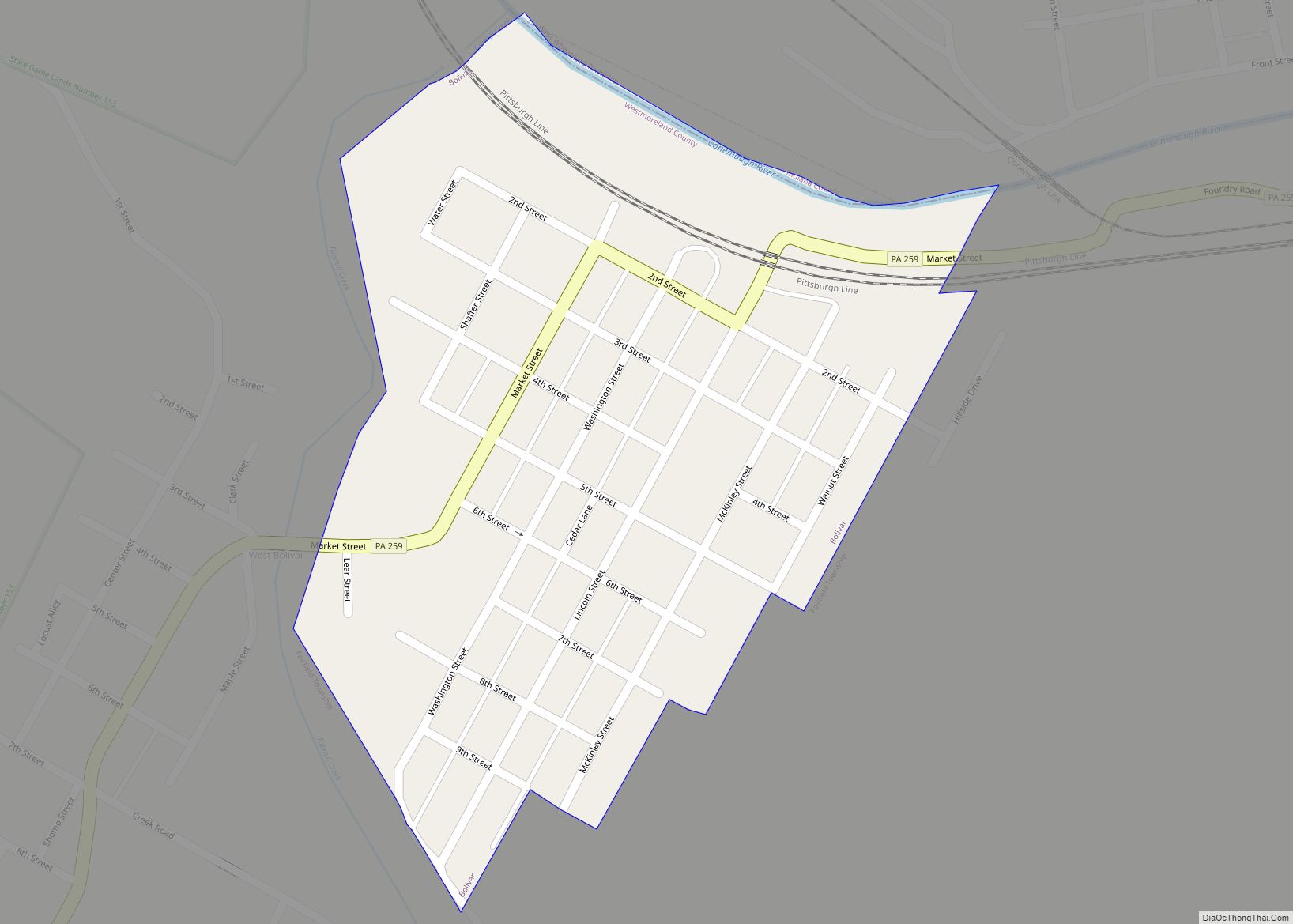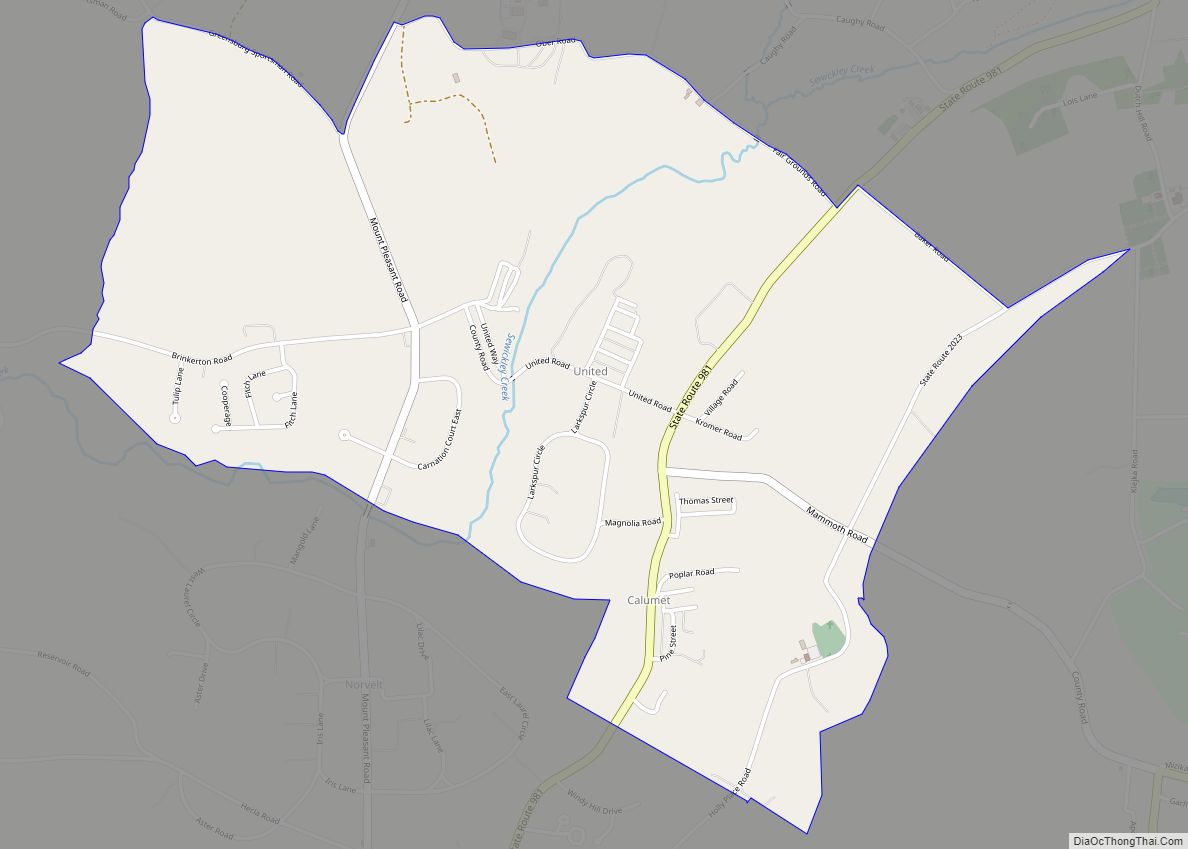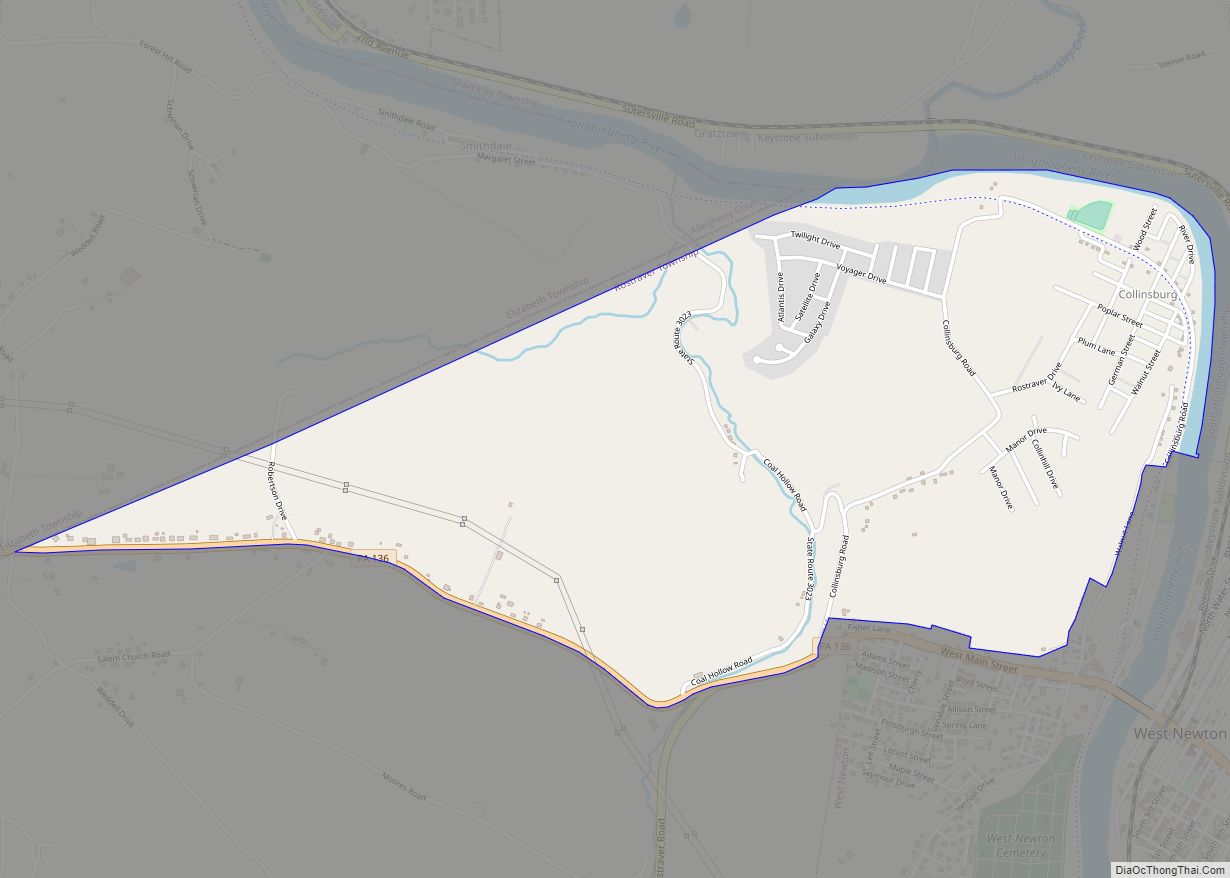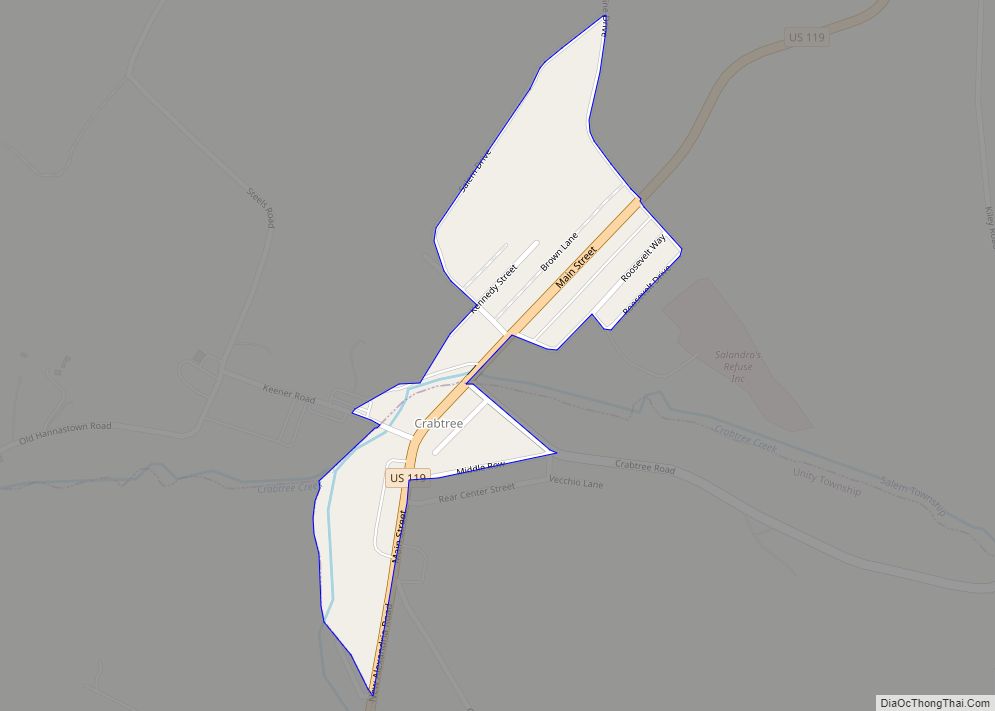Monessen is a city in Westmoreland County, Pennsylvania, United States, along the Monongahela River. The population was 6,876 at the 2020 census. It is the southwestern-most municipality of Westmoreland County. Steel-making was a prominent industry in Monessen, which was a Rust Belt borough in the “Mon Valley” of southwestern Pennsylvania that became a third-class city in 1921. Monessen is part of the Pittsburgh metropolitan area, the Rivers of Steel National Heritage Area, as well as the Laurel Highlands.
| Name: | Monessen city |
|---|---|
| LSAD Code: | 25 |
| LSAD Description: | city (suffix) |
| State: | Pennsylvania |
| County: | Westmoreland County |
| Elevation: | 1,128 ft (344 m) |
| Total Area: | 3.02 sq mi (7.83 km²) |
| Land Area: | 2.89 sq mi (7.48 km²) |
| Water Area: | 0.14 sq mi (0.35 km²) |
| Total Population: | 6,876 |
| Population Density: | 2,381.71/sq mi (919.58/km²) |
| ZIP code: | 15062 |
| Area code: | 724 |
| FIPS code: | 4250344 |
| Website: | www.cityofmonessen.com |
Online Interactive Map
Click on ![]() to view map in "full screen" mode.
to view map in "full screen" mode.
Monessen location map. Where is Monessen city?
History
Monessen, named for the Monongahela River and the industrial German city of Essen, was created by land speculators fairly late in the history of the Mon Valley, after neighboring towns had already been settled. The East Side Land Company bought land from various farmers, laid out the streets, and then sold the lots to prospective residents and employers. James M. Schoonmaker, who had made his fortune in coke, owned a controlling interest in the land company. Other investors in the land company who were also immortalized in street names include Philander C. Knox, James H. Reed, H. Sellers McKee, George O. Morgan, and George B. Motheral. In May 1897, National Tin Plate Company, founded by William Donner, began building its mill, thus becoming Monessen’s first employer. Sales of lots began on July 27, 1897, for the general public and other employers. Monessen became a borough on September 3, 1898.
Monessen experienced rapid growth in the first two decades of the twentieth century, the population increasing from 2,197 in 1900 to 11,775 in 1910 and then to 18,179 in 1920.
While there were many companies operating in Monessen, the largest employer was Pittsburgh Steel Company, later renamed Wheeling-Pittsburgh Steel. In a practice that is shocking by today’s standards (and not limited to Monessen), pay was determined by ethnic background. For example, a Welsh immigrant would be paid more than an Italian immigrant. A normal workweek was 84 hours (7 days times 12 hours). Employers did not adopt the eight-hour workday until the 1920s.
Monessen’s status changed from “borough” to “city” on September 16, 1921.
Beginning in the middle to late 1960s, the region’s manufacturers, especially the steel industry, found it harder to compete, which led to employee layoffs. In 1972, the closure of Page Steel and Wire Company was a major setback to the city. A far greater blow to Monessen occurred when its largest employer, Wheeling-Pittsburgh Steel, closed nearly all its Monessen operations in 1986. The company’s rail mill did not close until March 1987. The mill’s closure marked the end of an era in Monessen’s history.
Monessen is currently trying to revitalize itself. The city has made efforts for several years to clean up abandoned properties in hopes of revitalizing the city. In January 2010 the first female mayor, Mary Jo Smith, was sworn in at the Monessen Municipal Building. Older residents know the steel mills will not be returning to the area. Younger residents barely remember the mills or are even unaware of the city’s industrial past. “I remember when they tore the blast furnaces down” in the mid-1990s, said one resident. “It was a big deal. My dad took me. I was 5.”
The Charleroi-Monessen Bridge was built in 1906 and demolished in 2011. It was listed on the National Register of Historic Places in 1988 and has yet to be removed from the register.
Monessen Road Map
Monessen city Satellite Map
Geography
Monessen is located at 40°9′15″N 79°52′58″W / 40.15417°N 79.88278°W / 40.15417; -79.88278 (40.154271, -79.882779).
According to the U.S. Census Bureau, the city has a total area of 3.1 square miles (8.0 km), of which 2.9 square miles (7.5 km) is land and 0.2 square miles (0.52 km) (4.90%) is water.
Monessen is part of the Greater Pittsburgh metropolitan statistical area.
Climate
The climate in this area is characterized by hot, humid summers and generally mild to cool winters. According to the Köppen Climate Classification system, Monessen has a humid continental climate, abbreviated “Cfa” on climate maps.
Surrounding and adjacent neighborhoods
Monessen’s only land border is with Rostraver Township. Across the Monongahela River in Washington County, Monessen runs adjacent to Carroll and Fallowfield Townships and North Charleroi (with a direct connector via Charleroi-Monessen Bridge).
See also
Map of Pennsylvania State and its subdivision:- Adams
- Allegheny
- Armstrong
- Beaver
- Bedford
- Berks
- Blair
- Bradford
- Bucks
- Butler
- Cambria
- Cameron
- Carbon
- Centre
- Chester
- Clarion
- Clearfield
- Clinton
- Columbia
- Crawford
- Cumberland
- Dauphin
- Delaware
- Elk
- Erie
- Fayette
- Forest
- Franklin
- Fulton
- Greene
- Huntingdon
- Indiana
- Jefferson
- Juniata
- Lackawanna
- Lancaster
- Lawrence
- Lebanon
- Lehigh
- Luzerne
- Lycoming
- Mc Kean
- Mercer
- Mifflin
- Monroe
- Montgomery
- Montour
- Northampton
- Northumberland
- Perry
- Philadelphia
- Pike
- Potter
- Schuylkill
- Snyder
- Somerset
- Sullivan
- Susquehanna
- Tioga
- Union
- Venango
- Warren
- Washington
- Wayne
- Westmoreland
- Wyoming
- York
- Alabama
- Alaska
- Arizona
- Arkansas
- California
- Colorado
- Connecticut
- Delaware
- District of Columbia
- Florida
- Georgia
- Hawaii
- Idaho
- Illinois
- Indiana
- Iowa
- Kansas
- Kentucky
- Louisiana
- Maine
- Maryland
- Massachusetts
- Michigan
- Minnesota
- Mississippi
- Missouri
- Montana
- Nebraska
- Nevada
- New Hampshire
- New Jersey
- New Mexico
- New York
- North Carolina
- North Dakota
- Ohio
- Oklahoma
- Oregon
- Pennsylvania
- Rhode Island
- South Carolina
- South Dakota
- Tennessee
- Texas
- Utah
- Vermont
- Virginia
- Washington
- West Virginia
- Wisconsin
- Wyoming
